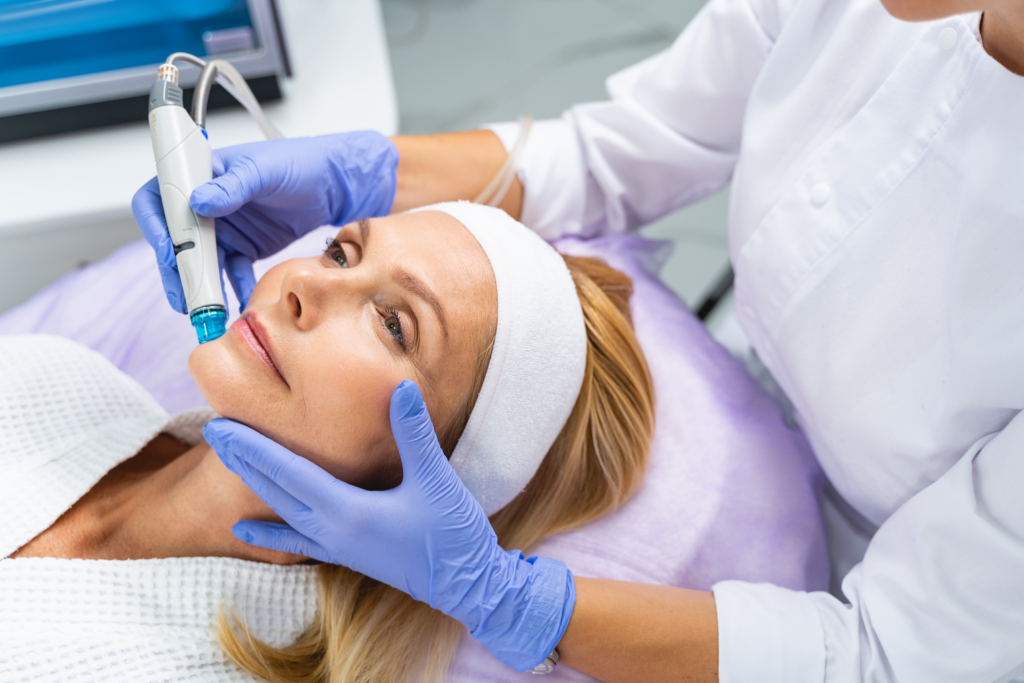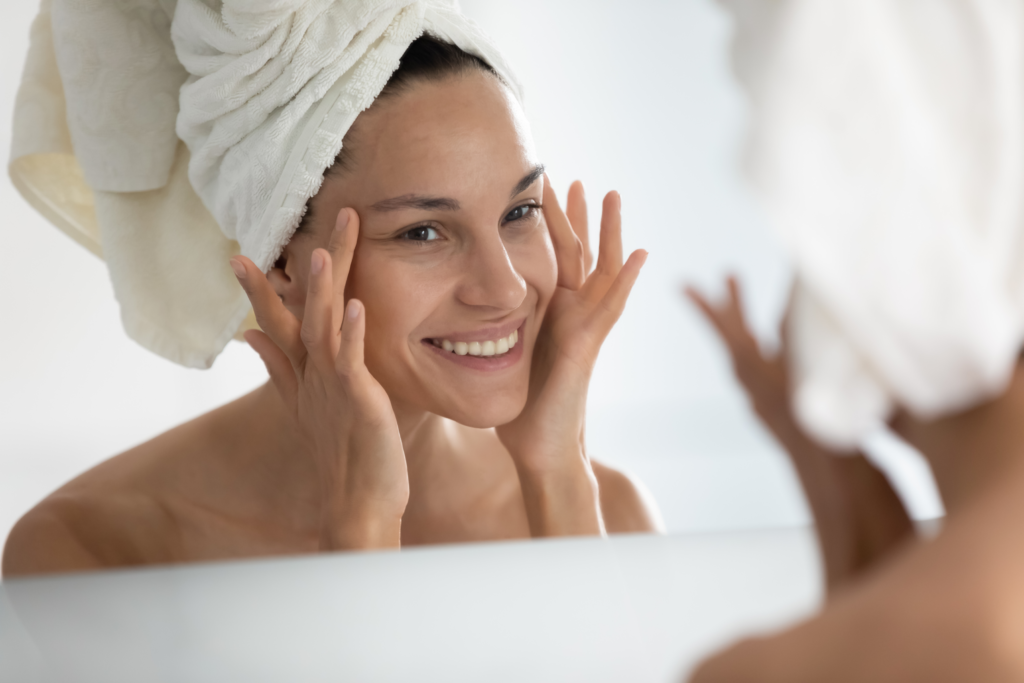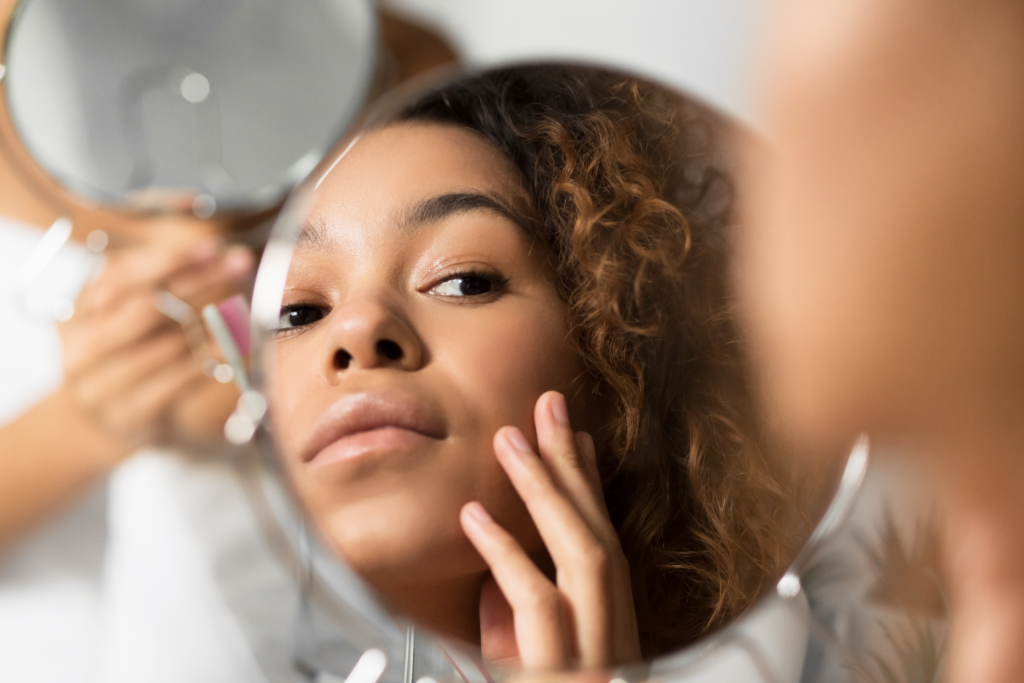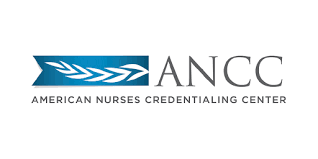Become a

VIP
Join Viso Juvé VIP today and receive a fantastic welcome gift – a FREE reward awaits new members!


Hydrafacials are one of the most popular in-home dermatological treatments right now and for good reason. In fact, a Hydrafacial is being performed somewhere in the world about every 15 seconds, which is a good testament to their popularity. But why all the fuss over Hydrafacial treatments? Simple-they provide clearly visible skin refinement, involve little to no downtime post treatments, and are a fast, effective way to clean, brighten and tone skin.
Hydrafacials are a proprietary process using special equipment and techniques to cleanse, exfoliate, extract, and deliver a variety of rejuvenating serums. Patients report an almost instantaneous brightening and firming of their skin. When treated regularly, specific skin concerns like clogged pores, enlarged pores, skin aging, and other unique skin concerns can be treated safely, effectively, painlessly, and provide immediate results.
Hydrafacials are similar to another facial treatment called microdermabrasion, because both removes the thicker, uneven outer layer of skin. Where microdermabrasion uses a mild abrasive to gently sand the skin, Hydrafacials use a combination of vacuum, water, and the infusion of enriching serums to achieve similar, and often better, results.

There are three basic steps in getting a Hydrafacial treatment, which can last anywhere from 30 to 90 minutes with virtually no downtime post treatment. That’s why zhydrafacial treatments are often performed backstage on fashion models before they walk the runway.
Hydrafacial treatment starts when the skin is resurfaced in a process that removes dead skin cells and unclog pores. The patented technology used in the Hydrafacial tip generates a fluid vortex over the skin to effectively and painlessly remove impurities and dead skin cells.
In this third step is where the “magic” wand of the hydrafacial technology pulls built-up gunk out of the pores while it bathes the skin with topical moisturizers. Different moisturizers will be recommend by your Viso Juvé dermatologist based upon your particular skin type and concern.
This is the finishing step where your inner glowing skin is revealed. Intense moisturizers in the form of boosters or serums are used to reduce the appearance of fine lines, hyperpigmentation, dull skin, and enlarged pores. Your skin’s surface will appear shiny, glowing, and smoother than before the treatment.

The company that manufactures Hydrafacial technology promises it will deliver the “best skin of your life.” Depending upon the active ingredients used in the final infuse and protect step, you can notice improved hydration, radiance, skin texture, skin tone, and even pore size. But remember, you can only get a Hydrafacial from a board certified dermatologist, so beware of say spas that claim to offer this service.
While the Hydrafacial device is proven safe and appropriate for most all skin types, there are some instances when you should avoid them. For instance, if you have a sunburn, any active rashes, open wounds, or rosacea, a Hydrafacial can aggravate these concerns. Likewise for moderate to severe acne. Plus, pregnant women should avoid Hydrafacials because salicylic acid is used in the process and its safety hasn’t been tested for pregnant women. It’s best to check with both your OB-GYN and your dermatologist before undergoing a Hydrafacial if pregnant. Also, if you use prescription creams, you should stop them a few days before the procedure to avoid irritation.
While many patients report excellent results after just one treatment, it works to improve skin’s appearance better over time. The good news is that its effects last longer than other facials. Most dermatologists recommend you get one every four to six weeks for the most glowing results.
It depends on the treatment. If you’re getting a Botox treatment, it’s best to get your Hydrafacial before getting Botox since patients should not lie down for a few hours after receiving Botox injections. Other add-on treatments that are especially effective include light therapy. Blue LED destroys acne bacteria, which helps reduce and heal breakouts. Red and green LEDs help reduce wrinkles and rejuvenate the skin.
Of course, the answer to this depends upon where you live and the medical provider you choose as well as the duration of the treatment, but most Hydrafacials last between 30 to 90 minutes and cost anywhere between $150 to $300 per session. But remember, they must be performed by a medical spa, licensed esthetician, or board certified dermatologist.
Want to know if a Hydrafacial is right for you? Ask our skin care experts at Viso Juvé for more details.








Join Viso Juvé VIP today and receive a fantastic welcome gift – a FREE reward awaits new members!
Get The Perfect Pout
$200 off lip filler
Free lip flip (dysport)
Plus a FREE Lip Treatment Duo ($274 savings)
Hydrafacial Deluxe
$50 off
Free Lip Perk
Plus get a FREE Lip Treatment Duo ($124 savings)
Dysport
Buy 30 units or more, get 30 units FREE ($150 savings)
Dermal Fillers
Buy 2 syringes of any Restylane, get one FREE
($800 savings)
Skin Care
Spend $200 or more in skincare, get a FREE Alastin Hydratint ($64 savings)